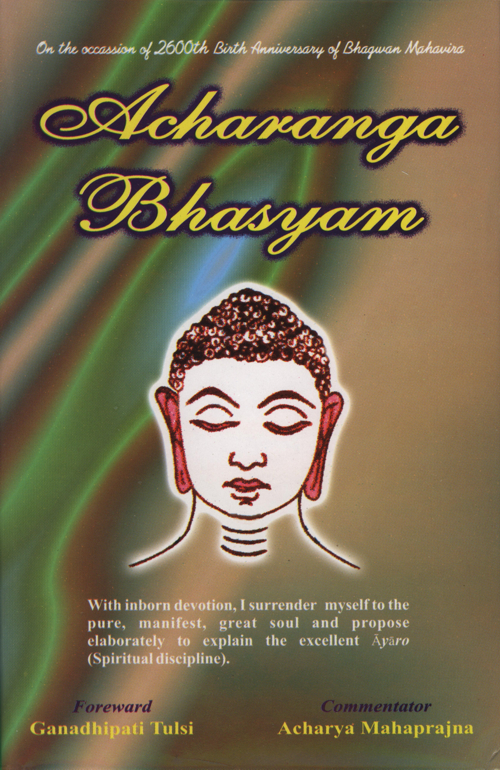From the available commentaries on the Ācārāṅga, the Niryukti is the oldest. It's author is Bhadrabahu II (5-6th century of Vikrama). The second oldest is the Cūrṇi. The former is in verse while the latter is prose. Although it has not yet been proved historically, yet Jinadasa Mahattara is considered to be author of the Cūrṇi. In the Ācārāṅga Cūrṇi, the author, while explaining the word dravya-aṅga through the method of nikṣepa (critical analysis), gives as an example the word cauramgijja [1] (which is the third chapter of the Uttarādhyayana). On the basis of this allusion, there is a possibility that the author of the Uttarādhyayana Cūrṇi could be the same person as the author of the Ācārāṅga Cūrṇi. If that is so, the author of the Ācārāṅga Cūrṇi could be 'Gopalika Mahattaraśiṣya', as recorded in the Uttarādhyayana Cūrṇi.[2]
Third commentary on the Ācārāṅga is 'Tῑkā' which is most exhaustive among all the commentaries. While the Niryukti is very compact and least voluminous, it is the most valuable one due to its historical closeness to Lord Mahāvῑra's times and it indicates the direction to be persuaded for the study of the Ācārāṅga. The ‘Cūrṇi’, although less voluminous, is also considered to be very valuable due to its depth and clarity of expression. The author of the 'Tῑkā' is Śilāṅka Suri, with pen-name Tattvaditya.[3] He completed this 'Tῑkā' [4] in the 8th century [5] in Gambhuta (Gujrata). Besides 'Tῑkā' other commentaries are as follows:
- Dῑpikā - by Maṇikyaśekharasūri, a disciple of Merutuṅga Suri of Aṅcala Gaccha.
- Dῑpikā - by Jinahaṅsasūri, the Paṭṭadhara of Jinasamudra Sūri of Kharatara Gaccha.
- Avacūrῑ - by Lakṣmῑkallola, a disciple of Harṣakallola.
- Bālāvabodhatal - by Pārṣvacaṅdra Sūri
- Padyānuvāda and Vārtika - by Śrῑmajjayācārya (19th century A.D.).
Padyānuvāda is the commentary in verse in Rajasthani language on the 1st part of the Ācārāṅga. ' Vārtika' deals with Ācāracūlā and is very important, since it throws light on contentious issues. Ārya Gandhahastῑ had written a commentary on the 1st chapter of Ācārāṅga i.e. Śastra-prijñā.
Ācārāṅga-BhāṣyaṃFor many years, I wished that there should be a 'Bāṣya' i.e. commentary on the Āgama Literature. The wish inspired Mahāprajñā to write the commentary in simple Sanskrit. Its uniqueness is that this Bhāṣya does not limit itself to the derivations of meaning contained in the Cūrṇi and Vṛtti, but explores new meaning in certain words, phrases and sūtras, which is the result of author's deep contemplative mind.
I hope this Bhāṣsya by Mahāprajñā would excel as the most authoritative work on the ethics, and obtain a high place among the works on Āgama-literature.
Ganadhipati Tulsi
Ācārāṅga Vṛtti, Patra 288: brahmacaryākhyaśrutaskandhasya nirvṛtikulῑnaśῑlācārye ṇa tattvādityāparanāmnā bāharisādhusahāyena kṛtā ṭῑkā parisamāptā.
dvāsaptatyadhikeṣu hi śateṣu gateṣu guptānām.
saṃvatsareṣu māsi ca, bhādrapade śuklapaṅcamyām..
śῑlācāryeṇakṛtā, gambhūtāyāṃ sthitena ṭῑkaiṣā.
samyagupayujya śodhyaṃ, mātsaryavinākṛtairāryaiḥ..
 Acharya Mahaprajna
Acharya Mahaprajna

